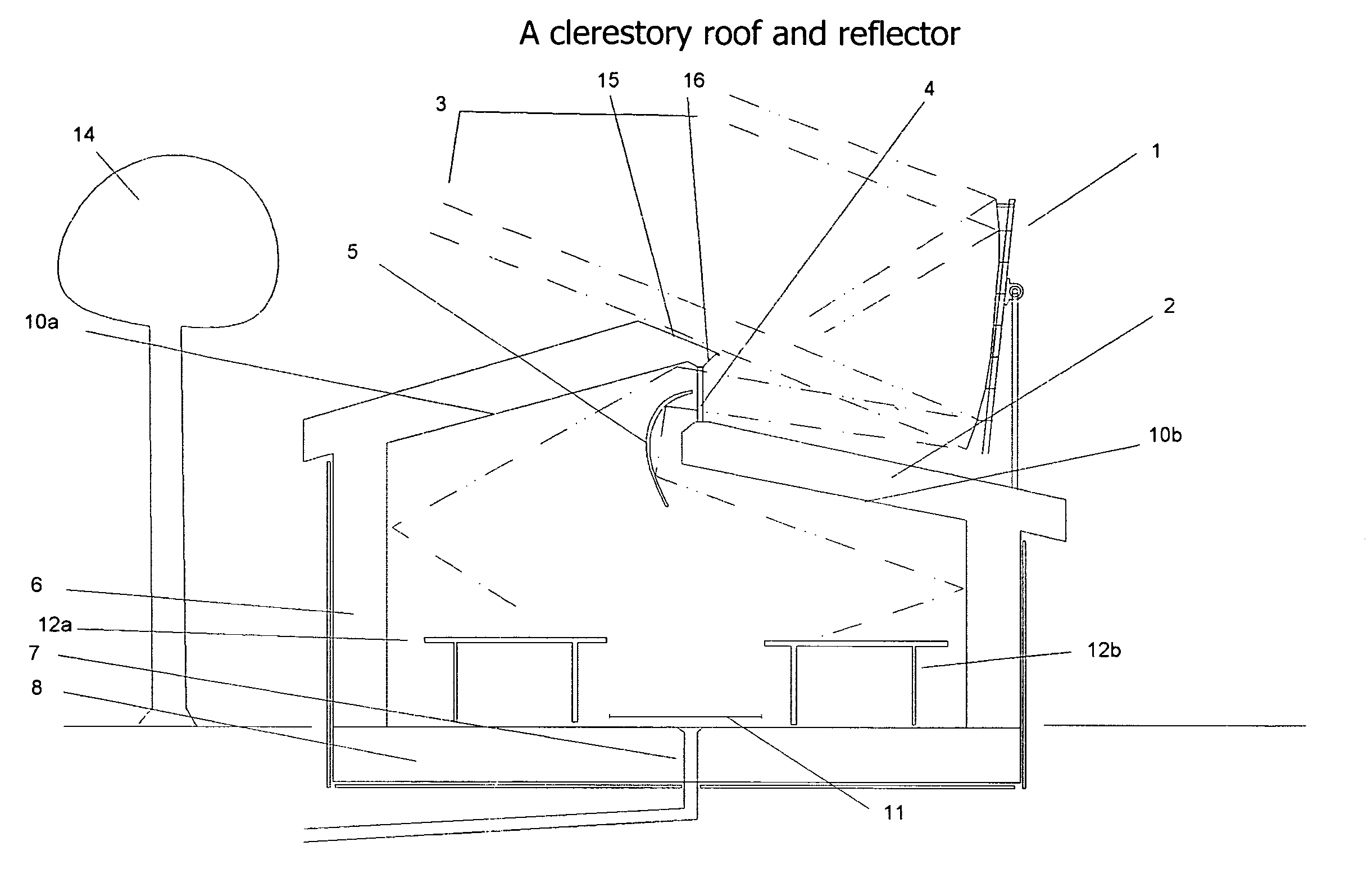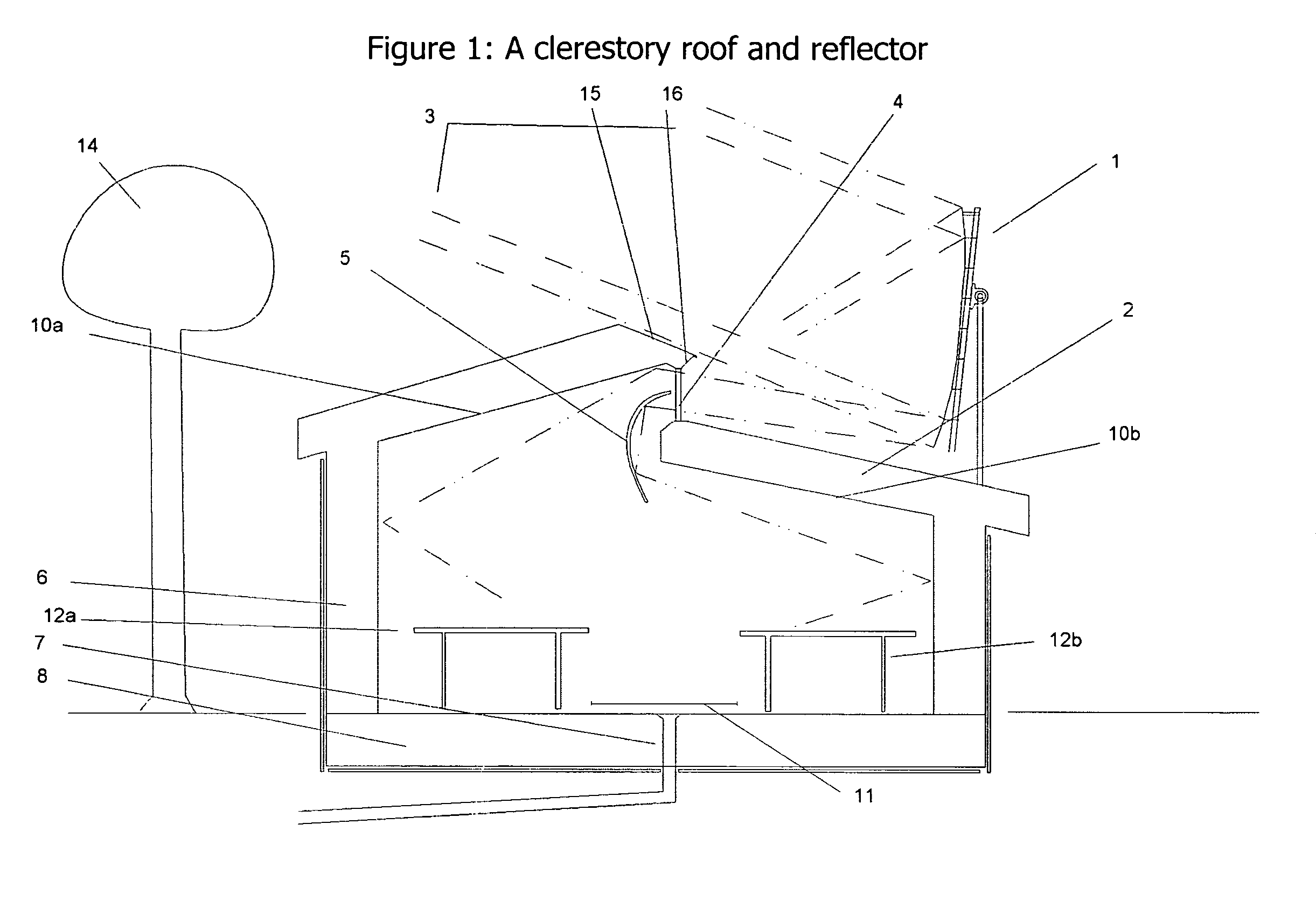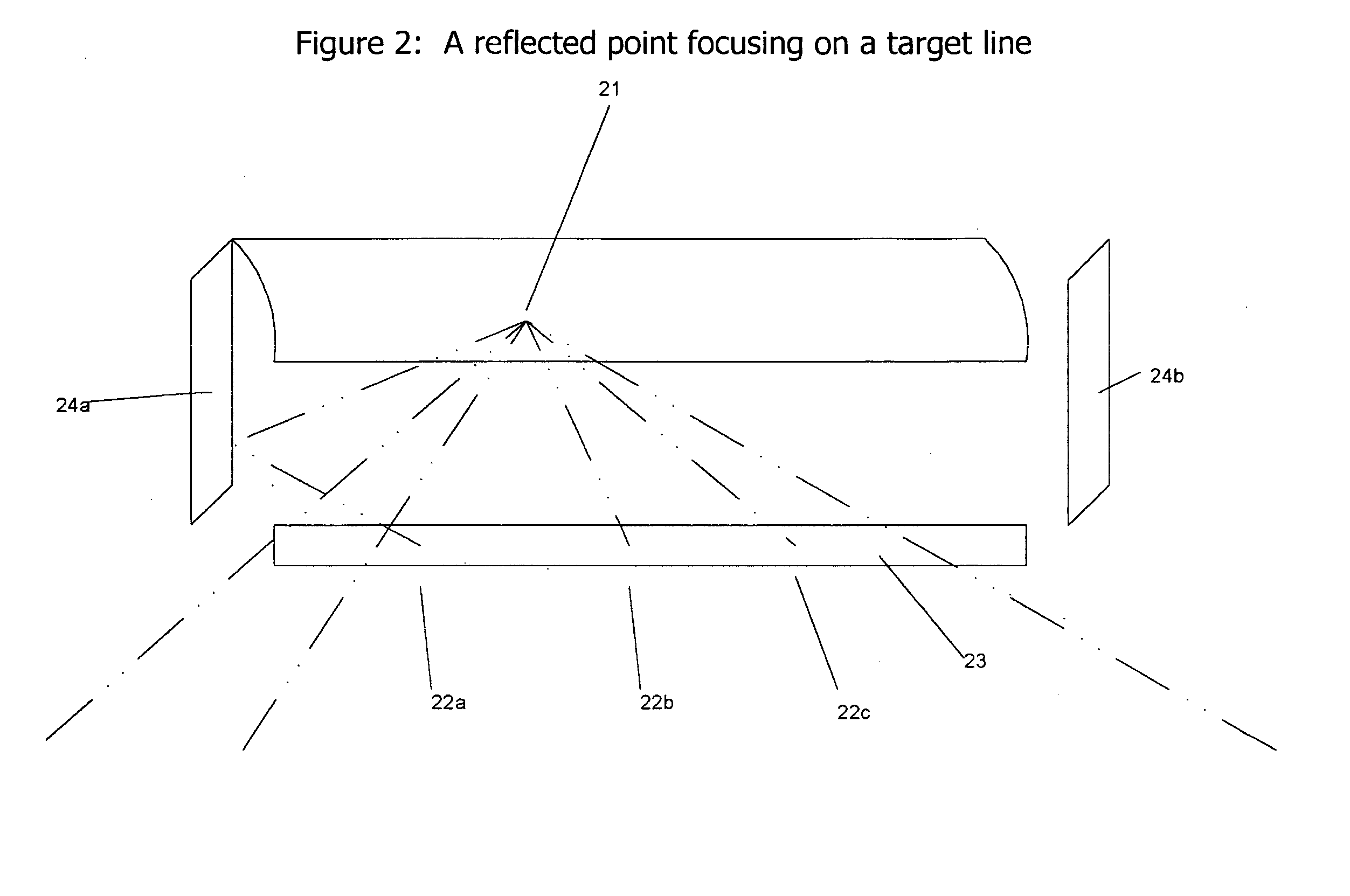Solar reflector, collecting window and heat storage
a solar reflector and window technology, applied in the safety of solar heat collectors, solar heat storage, lighting and heating apparatus, etc., can solve the problems of infrared heat going, leaking heat through glass, and waste of heat, so as to reduce heat loss and reduce heat loss
- Summary
- Abstract
- Description
- Claims
- Application Information
AI Technical Summary
Benefits of technology
Problems solved by technology
Method used
Image
Examples
Embodiment Construction
[0045]In the invention's primary embodiment,
[0046]Note that the approximate directions north, south, east and west will be used in this document to describe applications in the temperate zone of the northern hemisphere. In the northern hemisphere the winter solstice occurs on or near December 21 of each year. Such directions would be reversed in the temperate zone of the southern hemisphere. In nearly equatorial sites such as, say, for example, at high altitudes, the south and north directions may be either reversed or maintained as is. At or near the earth's poles the direction of “north” may be nearly arbitrary for siting purposes.
[0047]In the embodiment shown in FIG. 1, a reflective linear trough (1) on a building roof, such as a greenhouse roof (2), concentrates sunlight (3) from any spot on the sun's daily arc from east through south to west, through a horizontally long target window (4), which may be, but doesn't have to be, a long series of smaller target windows in a line, i...
PUM
 Login to View More
Login to View More Abstract
Description
Claims
Application Information
 Login to View More
Login to View More - Generate Ideas
- Intellectual Property
- Life Sciences
- Materials
- Tech Scout
- Unparalleled Data Quality
- Higher Quality Content
- 60% Fewer Hallucinations
Browse by: Latest US Patents, China's latest patents, Technical Efficacy Thesaurus, Application Domain, Technology Topic, Popular Technical Reports.
© 2025 PatSnap. All rights reserved.Legal|Privacy policy|Modern Slavery Act Transparency Statement|Sitemap|About US| Contact US: help@patsnap.com



